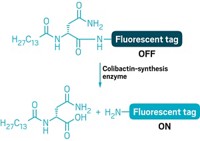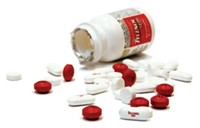Advertisement
Grab your lab coat. Let's get started
Welcome!
Welcome!
Create an account below to get 6 C&EN articles per month, receive newsletters and more - all free.
It seems this is your first time logging in online. Please enter the following information to continue.
As an ACS member you automatically get access to this site. All we need is few more details to create your reading experience.
Not you? Sign in with a different account.
Not you? Sign in with a different account.
ERROR 1
ERROR 1
ERROR 2
ERROR 2
ERROR 2
ERROR 2
ERROR 2
Password and Confirm password must match.
If you have an ACS member number, please enter it here so we can link this account to your membership. (optional)
ERROR 2
ACS values your privacy. By submitting your information, you are gaining access to C&EN and subscribing to our weekly newsletter. We use the information you provide to make your reading experience better, and we will never sell your data to third party members.
Analytical Chemistry
Noninvasive Method Measures Carcinogen Exposure
ACS Meeting News: Mass spec technique detects biomarkers of DNA damage linked to urinary tract cancers
by Matt Davenport
August 13, 2014

When humans metabolize carcinogens, they generate compounds capable of damaging DNA. Current techniques that track these metabolites are labor intensive and can demand too much tissue from patients. Now, researchers have developed a way to noninvasively monitor certain DNA-damaging chemicals with mass spectrometry, provided a patient is willing to urinate into a cup.
Mass spectrometry can detect metabolites of aristolochic acids, which are well-documented carcinogens, bound to the DNA of cells retrieved from urine, said Robert J. Turesky at the American Chemical Society national meeting in San Francisco this week. Aristolochic acids come from Aristolochia plants routinely used in herbal medicines and supplements and can lead to urinary tract cancers. Speaking at a session in the Division of Chemical Toxicology, Turesky, a professor of medicinal chemistry at the University of Minnesota, said that although the results are preliminary, he’s excited by the prospect of extending the technique to study biomarkers of other urinary tract carcinogens.
Researchers led by Turesky and Arthur P. Grollman, a professor of pharmacology and medicine at Stony Brook University, SUNY, developed the mass spec assay to detect what are called DNA adducts of aristolochic acid. The adducts are produced when human enzymes break down aristolochic acids into reactive species that covalently bind to DNA and cause damage.
Mass spectrometry is several orders of magnitude more sensitive than previous adduct isolation techniques, which involved labeling DNA fragments with radioactive phosphorous and then separating them with thin-layer chromatography. In addition to eliminating the need for radioactive isotopes, the mass spec technique requires less time and effort from researchers.
But it was the specificity of the method that most impressed Daniel C. Liebler of Vanderbilt University School of Medicine. “Chemicals in urine are derived from all tissues in the body,” but the cells that Turesky and Grollman’s team are extracting come only from the urinary tract, Liebler said. Looking at the DNA adducts within these cells “provides a very strong level of evidence” that these chemicals are reliable biomarkers for specific urinary tract cancers, Liebler said. “That’s really clutch.”
The team also established that DNA adducts of aristolochic acids endure in the body. “Some individuals ceased using herbs years ago, but we can still measure this DNA adduct biomarker in their urine,” Turesky said. The adducts’ persistence may enable researchers to relate adduct levels to patient outcomes over time, potentially without biopsies. “We’re hoping, with our analytical mass spectrometry methods, that our DNA adduct biomarkers will identify individuals at risk and help to refine cancer risk estimates.”






Join the conversation
Contact the reporter
Submit a Letter to the Editor for publication
Engage with us on Twitter